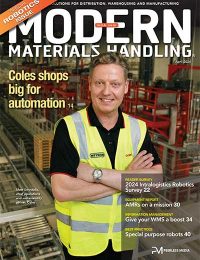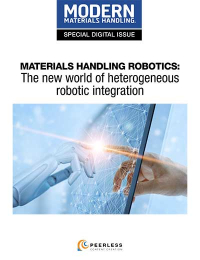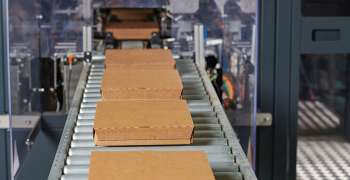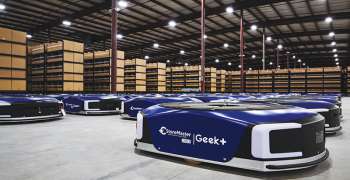Lift Truck Tips: Increase efficiency, not risk in narrow aisles
Narrow aisle new adopters and veterans alike should review technology, safety and equipment setup.
Latest Material Handling News
New resource center for weighing and dimensioning Protective packaging roundup MODEX C-Suite Q&A: Troy Donnelly, Senior VP of Sales, Marketing, and Application, DMW&H When Just-in-Time Just Doesn’t Work Recycling coastline plastic into premium reusable packaging More ColumnsThe idea behind adding narrow aisles (8 or 9 feet wide) or very narrow aisles (6 or 7 feet wide) to a facility with conventional aisle width (10 to 12 feet) is that a company can more efficiently store and retrieve fast-moving or slow-moving products. Although wider aisles remain open to two-way truck traffic, narrow aisles make better use of available space.
But during the transition to narrow-aisle setups, Susan Comfort, product manager of narrow aisle products for Raymond, warns that failing to successfully transition your lift truck equipment can negate efficiencies. A few simple adjustments can ensure facilities neither compromise safety nor decrease the life of equipment.
Because pedestrian traffic can become increasingly hazardous in narrow-aisle facilities, it’s a place where technology can help reduce the likelihood of an accident. Truck speed can be limited or magnetic strips can be placed at the end of aisles to automatically reduce speeds. A truck could even be programmed to have a different top speed in an aisle or when traveling between aisles.
While such modifications can make the operator’s job easier, Comfort is careful to emphasize the importance of training to overall safety.
“Safety is the marriage of the right truck, the right application setup and operator training,” she says.
Comfort offered a few tips to ensure the application setup—a commonly overlooked piece of the equation—is ideal.
“The first tip is simple,” says Comfort. “Make sure the mast height is appropriate. Operators might try to simply work around new ceilings, but trucks can be configured with a maximum mast height that will prevent equipment collisions.”
Along the same lines, Comfort advises managers to verify that the weight and dimensions of a given load are appropriate for the truck.
“Things can change so quickly in business these days,” says Comfort, who adds many customers have pushed their equipment to a longer service life than usual. “Your average weight may have changed, too. If you take on a new product line and try to cram everything in there, you have to continue to review the application.”
Without constant review, problems will make themselves known in the maintenance budget line, Comfort suggests.
“I don’t know how to say it politely, but I’m always surprised how few people track their maintenance costs,” she says.
Energy costs, on the other hand, get plenty of attention. Customers are increasingly calling for universal battery platforms across multiple truck styles.
“That is something we have kept a close ear to because it makes a lot of sense,” says Comfort.
Read more Modern Lift Truck Tips.

Article Topics
Columns News & Resources
New resource center for weighing and dimensioning Protective packaging roundup MODEX C-Suite Q&A: Troy Donnelly, Senior VP of Sales, Marketing, and Application, DMW&H When Just-in-Time Just Doesn’t Work Recycling coastline plastic into premium reusable packaging Fresh food, anyone? RPCs protect in the supply chain Why Isn’t Your Loading Dock Connected to Your Supply Chain? More ColumnsLatest in Materials Handling
Beckhoff USA opens new office in Austin, Texas Manhattan Associates selects TeamViewer as partner for warehouse vision picking ASME Foundation wins grant for technical workforce development The (Not So) Secret Weapons: How Key Cabinets and Asset Management Lockers Are Changing Supply Chain Operations MODEX C-Suite Interview with Harold Vanasse: The perfect blend of automation and sustainability Consultant and industry leader John M. Hill passes on at age 86 Registration open for Pack Expo International 2024 More Materials HandlingAbout the Author
Subscribe to Materials Handling Magazine

Find out what the world's most innovative companies are doing to improve productivity in their plants and distribution centers.
Start your FREE subscription today.
April 2024 Modern Materials Handling

Latest Resources










